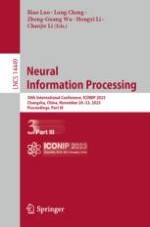2024 | OriginalPaper | Buchkapitel
RMPE:Reducing Residual Membrane Potential Error for Enabling High-Accuracy and Ultra-low-latency Spiking Neural Networks
verfasst von : Yunhua Chen, Zhimin Xiong, Ren Feng, Pinghua Chen, Jinsheng Xiao
Erschienen in: Neural Information Processing
Verlag: Springer Nature Singapore
Aktivieren Sie unsere intelligente Suche, um passende Fachinhalte oder Patente zu finden.
Wählen Sie Textabschnitte aus um mit Künstlicher Intelligenz passenden Patente zu finden. powered by
Markieren Sie Textabschnitte, um KI-gestützt weitere passende Inhalte zu finden. powered by
